Welcome to our blog post on how to change a blade in a jigsaw! If you’re looking to revamp your jigsaw skills and take your woodworking to the next level, then understanding the process of changing blades is essential.
Changing the blade on a jigsaw may appear difficult at first, but it is a simple technique that can be accomplished with practice. To change the blade on a jigsaw, use the blade release button or an Allen wrench to release the blade, remove the old blade, insert the new blade, and secure it in place.
Jigsaws are versatile power tools that are commonly used for cutting curves and intricate shapes in materials such as wood, metal, and plastic. In this guide, we will walk you through the step-by-step process of changing a blade in a jigsaw.
By the end of this article, you will be able to change the blade in your jigsaw with ease, making your woodworking projects much smoother.
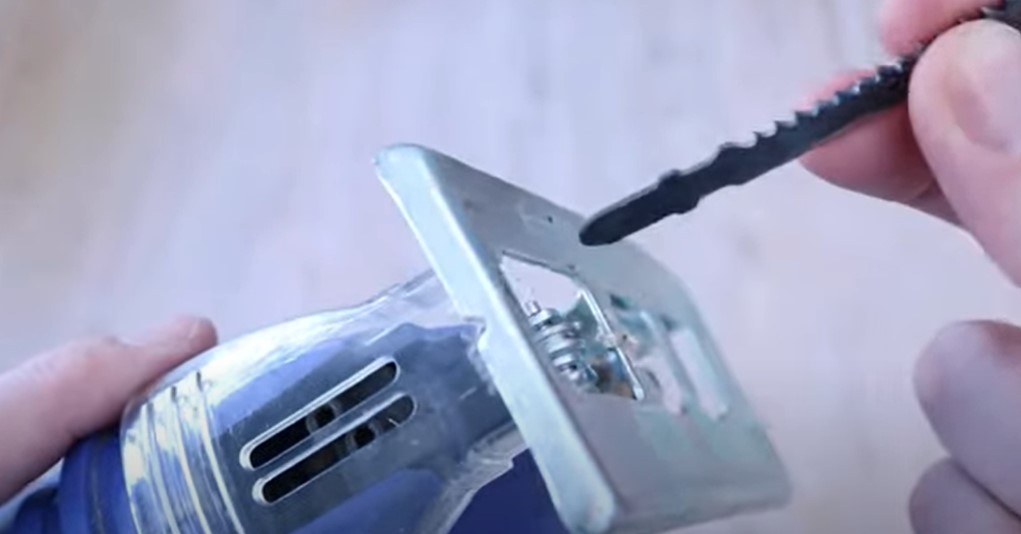
Gathering The Tools To Change Blade In A Jigsaw
Before you start changing the blade in your jigsaw, make sure you have the necessary tools and equipment.
Here’s a list of everything you’ll need:
- Jigsaw blade
- Jigsaw
- Work gloves
- Safety goggles
- Allen wrench/key
- Workbench or clamp
How To Choose The Right Blade For Your Jigsaw?
Choosing the right blade for your jigsaw is crucial for getting the job done right. Here are a few things to keep in mind when selecting the right blade for your project:
Material: Consider the type of material you’ll be cutting, including wood, plastic, metal, or ceramic. Different materials require different blade types.
Teeth per inch (TPI): The number of teeth per inch on the blade affects the speed and smoothness of the cut. Fewer teeth per inch create faster, rougher cuts, while more teeth per inch produce slower, smoother cuts.
Blade thickness: Thicker blades are more durable, but they may not fit into tighter spaces or create detailed cuts.
Blade shank: Check your jigsaw manual to confirm the type and size of the blade shank that fits your tool.
With these considerations in mind, you’ll be able to choose the right blade for your jigsaw and get the job done right.
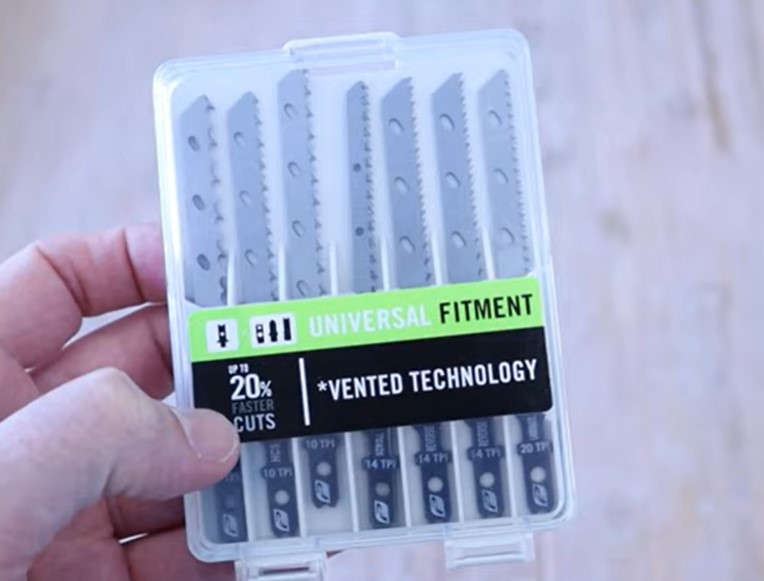
Removing The Old Blade
Step-By-Step Guide On How To Remove The Blade Safely
If you want to change the blade in your jigsaw, it is essential to keep safety in mind. Before you begin, switch off the device and unplug it from the power source.
Follow these simple steps to remove the old blade safely:
1. Locate the blade release button: Depending on the jigsaw brand, the blade release button is likely to be located on the side of the jigsaw. It is a small lever that you need to press to release the blade.
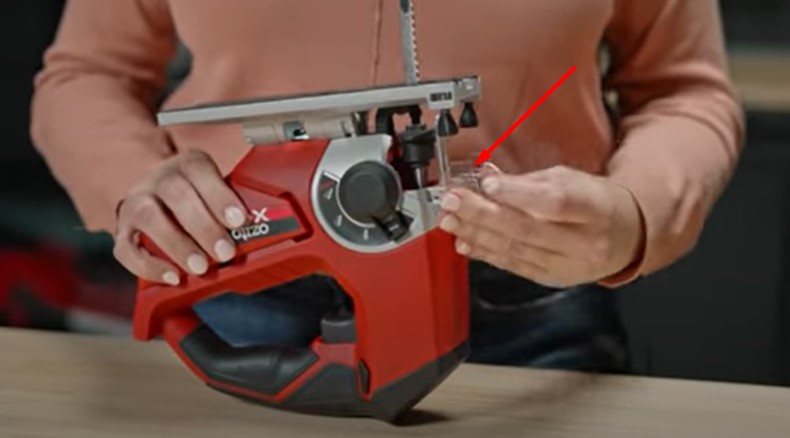
2. Release the blade: While you hold down the blade release button, gently pull the blade out of the jigsaw. Don’t apply too much force as it may damage the device.
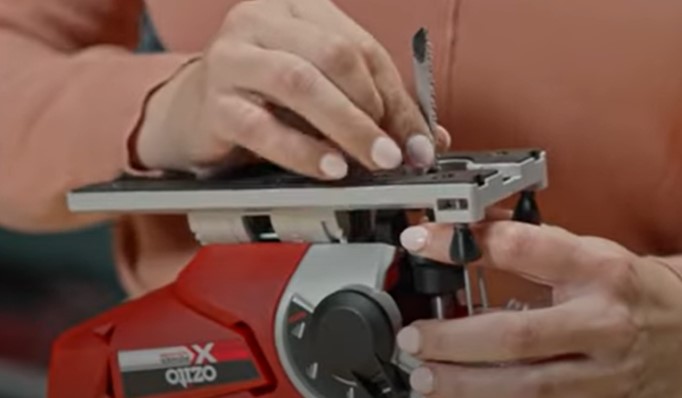
3. Remove the blade: Once the blade has been released, carefully remove it from the saw.
Common Mistakes To Avoid When Removing The Blade
Even though removing a blade seems like a straightforward task, there are some common mistakes that people make.
Here are a few things to keep in mind to avoid making mistakes:
- Not switching off the saw: Never try to remove the blade while the jigsaw is still on. Always unplug the jigsaw and switch it off before you change the blade.
- Applying too much force: As mentioned earlier, you don’t have to use excessive force to remove the blade. Doing so may cause damage to the blade or the device.
- Not using a proper wrench: Use only the wrench that came with the jigsaw to loosen or tighten the blade. If you use the wrong size wrench, you run the risk of damaging the blade or injuring yourself.
- Mishandling the blade: Blades are sharp, and it is crucial to handle them with care. Avoid touching the blade’s teeth with your bare hands as they can cause serious injuries. Use a pair of pliers or gloves instead.
Now that you know how to remove the blade safely and avoid common mistakes let’s move on to the next section of this guide.
Installing The New Blade
Step-By-Step Guide On How To Install The New Blade Correctly
Installing the new blade in a jigsaw can be tricky, but it’s not a complicated process to follow if you have the right guide.
Below you can find a step-by-step guide on how to install a new blade correctly:
- Firstly, make sure the jigsaw is unplugged or the battery has been removed before changing the blade.
- Next, set the blade-changing facility of your jigsaw at the base of the handle to an open position.
- Then, slide the blade holder all the way forward to its maximum forward motion.
- The appropriate blade for your intended cutting material should be selected.
- Push the blade firmly into the blade holder, making sure it is secure. The blade should be positioned with the toothed edge facing forward.
- Release the blade holder, and the blade should be firmly held in place.
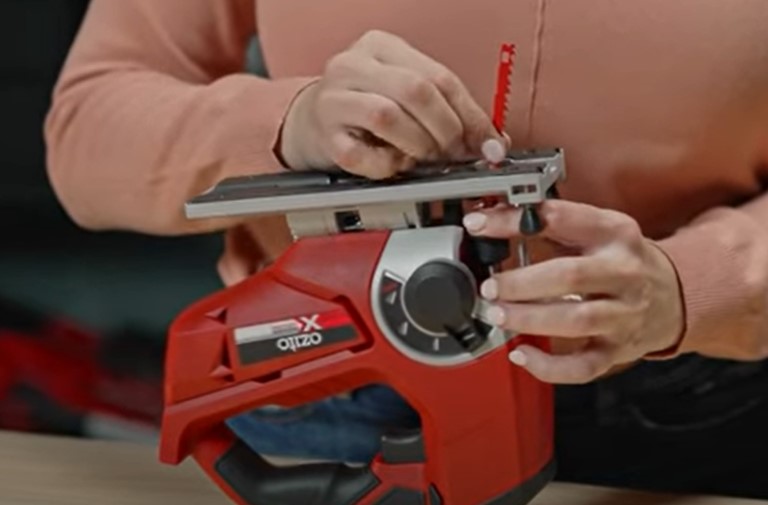
It’s essential to ensure the blade is secure before operating the jigsaw, so let’s take a look at the next section.
How To Check If The Blade Is Secure?
After installing the blade, you should check its security before using the jigsaw.
Here are some steps to follow to ensure the blade is safe:
- Push the blade back and forth from side to side to confirm that it is secure in the jigsaw.
- Check the blade’s position in the blade holder. Ensure that it is firmly in place and not sticking out too far from the blade holder.
- Test the blade’s security by applying pressure to the blade firmly in opposite directions. If the blade moves considerably, then it may not be correctly installed and needs to be readjusted.
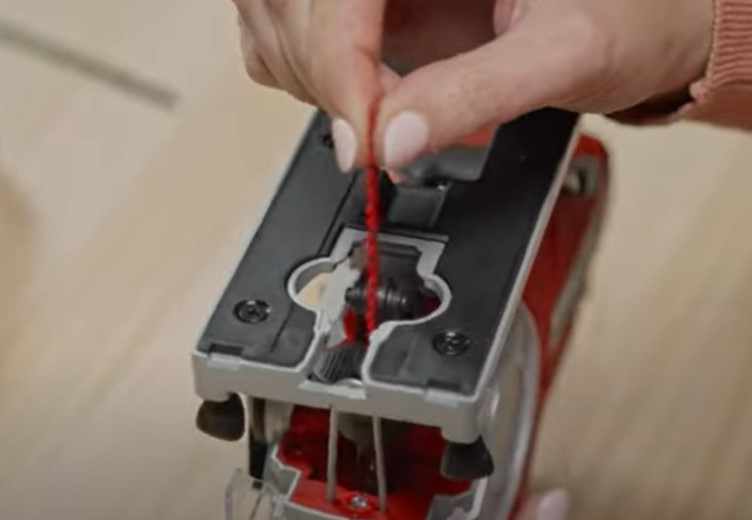
That’s it! Now you know how to install a new blade and ensure it is secure. Happy sewing!
Testing The New Blade
Before using the jigsaw, it is crucial to test the new blade to ensure that it is set up correctly and will function correctly. Here are some tips for testing a new blade:
Tips on how to test the new blade before use:
- Start by ensuring the jigsaw is turned off and unplugged, and wearing safety glasses or goggles.
- Insert the new blade into the jigsaw by following the manufacturer’s instructions, making sure it is correctly secured.
- Turn on the jigsaw and allow it to run for a few seconds. Listen for any unusual noises or vibrations, which could be a sign that the blade is not installed correctly.
- Move the jigsaw up and down with gentle pressure and pay attention to how the blade cuts through the material. Take note of any inconsistencies or difficulties in the cutting process, which may indicate that the blade is not set up correctly.
- Turn off the jigsaw and inspect the blade for any signs of damage, warping, or wear and tear. If there are any issues with the blade, it could affect the cutting process and potentially cause harm to the user.
What to look out for during the testing phase:
- Check the blade’s alignment in the jigsaw. If it is not straight, it may cause problems during the cutting process.
- Ensure the blade is correctly seated and secured, and that there is no movement or wobbling during use. Otherwise, the blade may come loose or cause uneven cuts.
- Make sure the blade is suitable for the material being cut. Using the wrong blade may result in damage to the material or the blade itself.
- Consider the depth of the blade and ensure it is set correctly for the task at hand. This will ensure efficient and precise cuts.
Troubleshooting potential issues:
- If the blade is not cutting correctly or produces jagged edges, it may indicate a dull blade. In this case, it is recommended to replace the blade before continuing.
- If the blade is smoking or producing an unusual amount of heat during use, it could be due to friction caused by a dull blade or incorrect blade installation. Stop using the jigsaw immediately and check the blade for any issues.
- If the jigsaw is still producing unusual noises or vibrations, even after rechecking the blade’s installation, it may indicate a problem with the jigsaw itself. In this case, it is advisable to seek professional advice or assistance.
By following these simple tips and checks when testing a new blade in a jigsaw, you can ensure that your tool is set up correctly, ready to use, and avoid any potential issues during the cutting process.
How to change a Jigsaw Blade [Video]
Maintenance And Care
Maintaining and caring for your jigsaw blade is crucial as it affects the blade’s lifespan and your cutting’s precision. Caring for your blade means that you will have optimal performance, saving you time and money in the long run.
Here are some reasons why you need to have proper maintenance and care for your jigsaw blade:
- Avoid wearing down your blade quickly
- Maintain the blade’s sharpness
- Prevent blade breakage
- Ensure accurate cuts
Tips On How To Extend The Lifespan Of Your Blade
To avoid wearing down your jigsaw blade quickly, you should implement some tips to ensure you extend its lifespan, such as:
- Use the correct blade for the specific material you’re cutting
- Lubricate the blade before use
- Adjust the speed of the blade to fit the material you’re cutting
- Clean the blade after use with a soft cloth
- Keep your blade in a safe place free from damage
Guidelines On How To Store Your Jigsaw Blade Safely
After use, it’s essential to keep your jigsaw blade safely in a place where it won’t acquire any damages that may affect its performance.
Here are guidelines on how to store your jigsaw blade safely:
- Store the blade in a dry place at a moderate temperature
- Use a blade holder when storing multiple blades
- Store the blade in a protective case when not in use
- Keep your blade away from other tools that can scratch or damage it
By following these guidelines, you’ll have a jigsaw blade that can cut efficiently and last longer. Proper maintenance and care for your jigsaw blade is necessary to prevent blade breakage and improve cutting accuracy. Remember, investing in the blade’s maintenance and care saves you money and ensures you have optimal performance.
Frequently Asked Questions Of How To Change Blade In A Jigsaw
How Do I Know If My Jigsaw Blade Needs Changing?
If your jigsaw blade is dull or damaged, it may cause wobbling or difficulty in cutting and it’s time to change it.
What Tools Do I Need For Changing The Jigsaw Blade?
For changing the jigsaw blade, you need a wrench that fits the blade screw and a new blade as a replacement.
Can I Change The Jigsaw Blade Without Using A Wrench?
It is not advisable to change a jigsaw’s blade without using a wrench as it leads to damage to the tool.
How Do I Safely Remove The Old Jigsaw Blade?
Ensure the jigsaw is unplugged and hold the blade with pliers, push the blade release button, and remove.
What Is The Right Blade Type For My Jigsaw Tool?
The type of blade you choose depends on the materials and the type of cut you are making. Refer to the manufacturer’s manual.
How Do I Insert The New Blade Into The Jigsaw Tool?
Insert the new blade into the base of the jigsaw and tighten it with the wrench in a clockwise direction. Test run the jigsaw before use.
Conclusion
Changing the blade on a jigsaw may seem like a daunting task, but it’s actually a fairly simple process when you follow the proper steps. Remember to unplug the jigsaw, use the correct blade for the job, and handle the blade with care.
Safety should always be a top priority when working with power tools. By following these steps, you can change the blade on your jigsaw quickly and efficiently, and get back to your project. With a bit of practice, this process will become second nature, and you’ll be able to swap blades with ease.
So, the next time you need to change the blade on your jigsaw, don’t be intimidated – just follow these steps and get the job done safely and effectively.
Related Posts:
- Are Jigsaw Blades Universal?
- How To Use A Jigsaw To Cut Curves?
- How To Make A Plunge Cut With A Jigsaw?
Recent Posts
Woodworking in 2025 is all about efficiency, precision, and smart technology. Whether you're a beginner or a seasoned craftsman, having the right tools can make all the difference. Here are the top 7...
Ever tried drilling into a piece of wood only to end up with a splintered mess or a wobbly hole? Yeah, it's more common than you think. Wood might seem like an easy material to work with, but...

